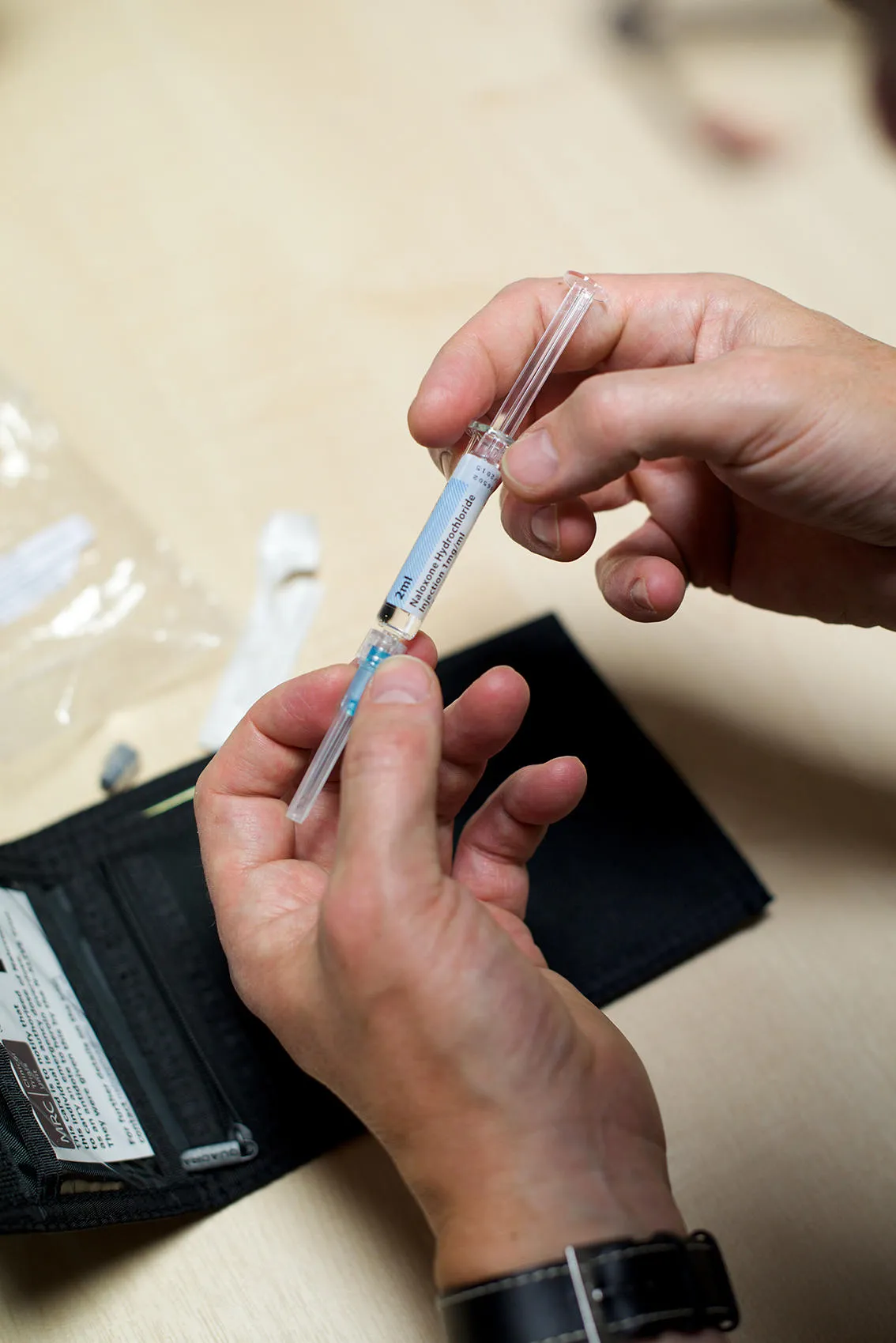Naloxone
Naloxone is an opiate antagonist which reverses the effects of a heroin overdose. Developed in the 1960s, the antidote has been used by emergency medical services as the standard treatment for suspected opiate overdose for over 40 years.
In 1992, Professor John Strang first mooted the possibility of providing naloxone directly to opioid users and family members to increase access to the lifesaving medication, and four years later, he explored the notion of take-home emergency naloxone more seriously in a BMJ editorial (1996).
Take-home naloxone schemes have since been introduced in local communities around the world, targeting individuals at risk for opioid overdose – active users, individuals starting opioid substitution treatment as well as former users at risk of relapse.
The study of take-home naloxone and its impact on the prevention of overdose deaths remains a core interest of Professor John Strang and colleagues at the Addictions Department.
Publications
Dettmer, K., Saunders, B., & Strang, J. (2001). Take home naloxone and the prevention of deaths from opiate overdose: two pilot schemes. BMJ: British Medical Journal, 322(7291), 895-896.
Best, D., Gossop, M., Man, L.-H., Stillwell, G., Coomber, R., & Strang, J. (2002). Peer overdose resuscitation: multiple intervention strategies and time to response by drug users who witness overdose. Drug and Alcohol Review, 21(3), 269-274.
Farrell, M., & Marsden, J. (2008). Acute risk of drug-related death among newly released prisoners in England and Wales. Addiction, 103(2), 251-255.
Powis, B., Strang, J., Griffiths, P., Taylor, C., Williamson, S., Fountain, J., & Gossop, M. (1999). Self‐reported overdose among injecting drug users in London: extent and nature of the problem. Addiction, 94(4), 471-478.
Strang, J. (1992). Harm reduction: defining the concept, exploring the boundaries, and identifying operational possibilities. Paper presented at the 3rd International Harm Reduction Conference, Melbourne.
Strang, J. (1993). Drug use and harm reduction: responding to the challenge. In N. Heather, A. Wodak, E. Nadelmann & P. O’Hare (Eds.), Psychoactive Drugs and Harm Reduction: from Faith to Science. London: Whurr Publishers.
Strang, J., Best, D., Man, L.-H., Noble, A., & Gossop, M. (2000). Peer-initiated overdose resuscitation: fellow drug users could be mobilised to implement resuscitation. International Journal of Drug Policy, 11(6), 437-445.
Strang, J., Bird, S. M., & Parmar, M. K. (2013). Take-home emergency naloxone to prevent heroin overdose deaths after prison release: rationale and practicalities for the N-ALIVE randomized trial. Journal of Urban Health, 1-14.
Strang, J., Darke, S., Hall, W., Farrell, M., & Ali, R. (1996). Heroin overdose: the case for take-home naloxone. BMJ: British Medical Journal, 312(7044), 1435.
Strang, J., Kelleher, M., Best, D., Mayet, S., & Manning, V. (2006). Emergency naloxone for heroin overdose: Should it be available over the counter? BMJ: British Medical Journal, 333(7569), 614.
Strang, J., Manning, V., Mayet, S., Best, D., Titherington, E., Santana, L.,. Semmler, C. (2008). Overdose training and take‐home naloxone for opiate users: prospective cohort study of impact on knowledge and attitudes and subsequent management of overdoses. Addiction, 103(10), 1648-1657.
Strang, J., Manning, V., Mayet, S., Titherington, E., Offor, L., Semmler, C., & Williams, A. (2008). Family carers and the prevention of heroin overdose deaths: Unmet training need and overlooked intervention opportunity of resuscitation training and supply of naloxone. Drugs: Education, Prevention, and Policy, 15(2), 211-218.
Strang, J., Powis, B., Best, D., Vingoe, L., Griffiths, P., Taylor, C., Gossop, M. (1999). Preventing opiate overdose fatalities with take‐home naloxone: pre‐launch study of possible impact and acceptability. Addiction, 94(2), 199-204.
Williams, A. V., Strang, J., & Marsden, J. (2014). Development of Opioid Overdose Knowledge (OOKS) and Attitudes (OOAS) Scales for take-home naloxone training evaluation. Drug and Alcohol Dependence, 132 (1), 383-386.
Williams, A. V., Marsden, J., & Strang, J. (2014). Training family members to manage heroin overdose and administer naloxone: randomized trial of effects on knowledge and attitudes. Addiction, 109(2), 250-259.

